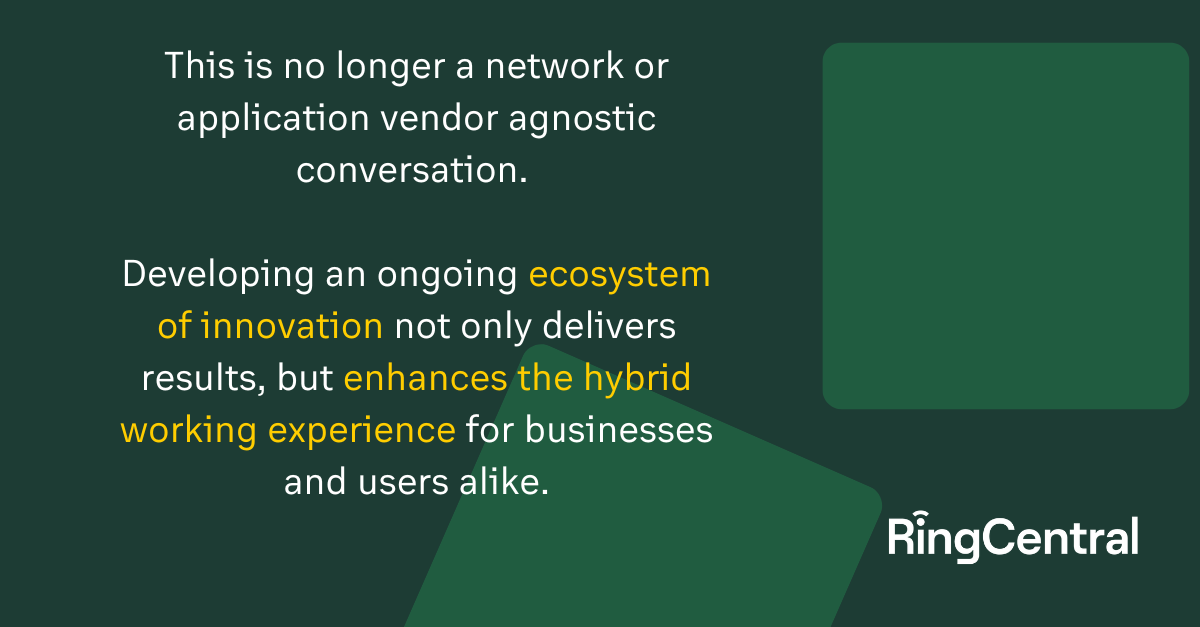We did it. We’re back on that long-awaited path to normality. Part in the office and part at home, fully remote or working from wherever the road takes us. It’s a hybrid world, after all.
But as we all know, the way we work and communicate changed dramatically in the past couple of years, and continues evolving. Ofcom’s 2022 report highlights the latest shift, noting that mobile data traffic grew 40% yearly. People are indeed on the move again.
Perhaps unsurprisingly, people are reluctant to return to the ‘old’ ways of working. More and more people are choosing to work from home because they want to, regardless of whether or not their offices are open.
Either way, workers now expect the flexibility to work from anywhere, and if businesses don’t offer this flexibility, they could face an exodus of talent. On top of this, according to research, companies that don’t adopt a good enough hybrid strategy believe they will fall behind the competition and make employees susceptible to things like burnout and lost productivity.
But that’s only one part of the story.
In their droves, businesses adopted cloud-based apps and tools in 2020, so it’s no surprise that the UCaaS market grew by 29.2% that year. It’s phenomenal growth and is part and parcel of the hybrid working world today. But the applications we use are only the surface of the technologies that lay the foundation for the future of work.
Suppose we look deeper than the click of a video button, the message pop-ups and the virtual backgrounds. If we even look beyond the genius that goes into the product development for the communications software we all use today. There’s one thing that keeps everything running: network connectivity. It drives it all. Without it, we’re in trouble.
The network effect on remote work
Both the quality and availability of the internet are fundamental to the new reality of hybrid work. Put plainly, economic and societal growth will not happen without quality, accessible and secure connectivity.
Now, more than ever, workers are aware that network services need to improve to support this new way of working. For example, 75% of UK workers believe broadband services need to improve significantly to support hybrid work.
A similar share (71%) say everyone should be able to securely connect to fast and reliable internet, regardless of location. So, if someone needs to step out and travel to a meeting, they can still contribute to a video call without network disruptions.
The trouble is, you may have noticed a few issues already. How was your connection the last time you attempted joining or hosting a video call on the train or Tube? The likelihood is it wasn’t the quality you wanted needed. You wouldn’t be alone in thinking that.
86% of rail travellers struggle to connect to the internet through WiFi, 3G or 4G on their smartphones while commuting.
If you consider that countries like France banned short-haul flights and told people to use trains instead (where the same journey could be made by train in under two and a half hours), this opens up a can of worms. If more workers are going to be hopping on the train and taking (video) calls, the need for high-quality connection will continue to surge, right? This isn’t just going to be a problem in France. There are plans for similar bans in other parts of the world.
So what does all this mean? We’ve realised that to heed the warnings that networks must evolve to meet future demands and deliver the quality experiences our users expect, we need to think outside of the box and enter into new types of partnerships.
Co-innovation and why it matters
Having explored how the way we work has changed and why network quality will become an even more crucial part of society, the next logical question to ask is, ‘what needs to change to ensure people have that fundamental accessibility and connectivity?’
It starts and ends with ‘co-innovation’. Rather than innovating separately, network and software providers work and innovate together. Our partnership with Frontier in the US is one prime example of this.
We’ve jointly developed a new bundle that combines RingCentral’s technology with Frontier’s high-speed internet and network solutions. In doing so, we’ve made it considerably easier for businesses to adopt a collaboration platform that facilitates effective communication. This level of communication is achieved through real-time messaging, HD video conferencing and enterprise-grade cloud-based telephony. Plus a network that ensures secure, reliable, consistent and excellent connectivity.
We want our partnerships to cover every type of interaction so we can provide value for a wide range of workers. As a result, RingCentral has a variety of hardware and software partnerships that bring together better solutions. These solutions help workers to become more productive, whether at home, in an office, or on the factory floor. We are actively working with our network providers to identify and enable additional features from cutting edge technology providers to enhance our customers ability to work from anywhere and be even more productive than before.
Our work with Frontier is just the beginning of our co-innovation journey. With additional partnerships already in place with technology giants such as Vodafone Business, AT&T, and Verizon, we’re placing a massive focus on the importance of partnerships to not only innovate and build differentiation within our product portfolio, but more importantly establish practical approaches to ensure continued relevance with tomorrow’s customer.
Delivering the next generation of work
As we continue to co-innovate with networks of partners, connectivity levels will become more consistent, accessible and affordable for all. Businesses will be able to increasingly support distributed workforces like never before. This will also open up access to wider talent pools in previously disadvantaged communities. Communities where network-related issues were typically a hindrance.
For employees, this shift in working habits boasts exciting opportunities. They will have the flexibility of sustained hybrid work that helps them better manage responsibilities outside of work. Thanks to less commuting, employees can spend more time with family or simply go to the gym more often. They also have the opportunity to travel for leisure while they work. Countless benefits.

Our goal is to develop an ecosystem of innovation between network and application providers. This ecosystem will enable businesses and employees alike to realise these hybrid work-related benefits. As remote work becomes central to everything we do, co-innovation between the businesses that create remote working tools and network providers delivering quality connectivity will be paramount.

Originally published Jun 10, 2022


